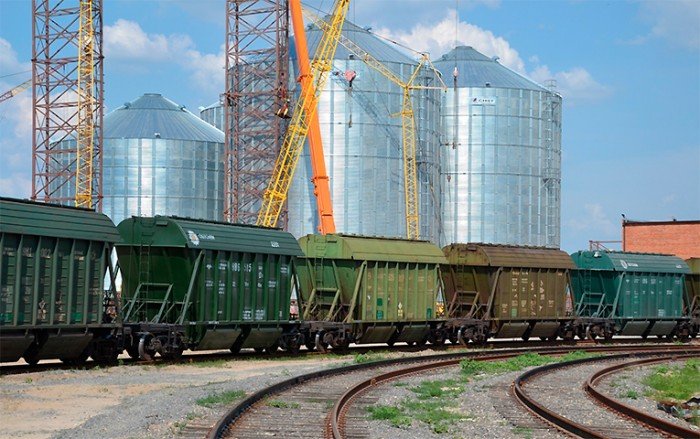Ukraine agri-export rail capacity up, but remains scant

Ukraine’s grain export railway capacity rose sharply in the first half of May, with monthly volumes expected to double in the coming months from those railed for export in March-April.
But a further expansion is likely to face a raft of obstacles, and even if realised, would probably be insufficient to utilise Ukraine’s large export potential and free up storages from large old-crop stocks.
Some 768,300t of Ukrainian grains were shipped for export by rail on 1-16 May, which compares with 642,500t in April and 415,900t in March, according to the country’s state-owned railway company Ukrzaliznytsia (see chart). And these volumes are expected to increase further, as Ukraine is actively working with its neighbours and partners to boost grain exports across Ukrainian western borders.
The European Commission last week suggested introducing ‘solidarity lanes’ between the EU and Ukraine to speed up agricultural exports that have been heavily disrupted since the start of Russia’s invasion. This was followed by a joint statement signed between Ukraine and Poland on 16 May, according to which the two countries agreed on simplification of the Polish border crossing of grain cargoes from Ukraine.
The expansion of Ukraine’s railway export capacity may face a number of hurdles on the road to its implementation, one of which is limited investment attraction, according to market participants. Some investors are refraining from investing because they expect a swift end to the war and a switch back to exports via the Black Sea.
And the expansion is further complicated by the differences between the two railway networks. Europe’s railway system differs from that of Ukraine in more than the gauge size. For example, in Ukraine it is possible to connect wagons carrying various commodities, such as a wagon of grain and a wagon of oil, whereas in Europe a train’s wagons can have only matching cargo.
In addition, much of Europe’s railway network is undergoing repairs, which slows overall train movement — the average railcar speed in Romania is 27 km/h, the Ukrainian Grain Association president Mykola Gorbachev told the GrainCom conference in Geneva on 17 May.
Another hampering factor for expanding Ukraine’s export railway capacity nears with the harvest of Romania’s wheat crop, which starts in June. Local transporters are likely to prioritise moving grains from inland Romania to the port of Constanta over transporting Ukrainian grains because it is much more time efficient, risk manager at Romanian agricultural firm Cerealcom Dolj Thomas Deevy told the same conference.
And an additional issue comes from the co-ordinating of phytosanitary and veterinary certificates and documentation when transporting Ukrainian grains to Europe, with in-between buyers reportedly on occasion having to contact all the handlers of the cargo in question from the point of origination, according to market participants.
As for transporting agricultural commodities via barges, a significant number of barges carrying Ukrainian grains are already stuck in line to Constanta port and expanding barge capacity would be of limited utility. Some 70pc of Ukraine’s grain exports after the blocking of the country’s Black Sea ports is via railway, and only 30pc is handled by Ukraine’s three Danube ports — Izmail, Reni and Ust-Dunaysk.
If Ukraine’s railway export capacity is expanded, issues may arise from export destination homogeneity. Typically, Ukraine’s grain export profile consisted in large parts of African, Asian, and European destinations. But if the country is forced to switch all of its export volumes to Europe, sellers of Ukrainian grains may have difficulties finding buyers.
And the increased railway export capacity would still be insufficient to free up silos for new crop, especially as Ukrainian farmers begin harvesting barley and wheat in the summer. Particularly crucial will be the second half of August and September, when sunflower seed and corn harvesting begins, and when the 2023-24 winter crop planted areas could see a significant drop because of insufficient free storage capacity. The decreased 2023-24 acreages might not be the only consequence of silos full of old crop. In the case of insufficient grain storage capacity, Ukrainian farmers may opt to leave parts of the 2022-23 corn crop unharvested for as long as until February 2023.

Ukraine rail shipments for export t
Read also
Wheat in Southern Brazil Impacted by Dry Weather and Frosts
Oilseed Industry. Leaders and Strategies in the Times of a Great Change
Black Sea & Danube Region: Oilseed and Vegoil Markets Within Ongoing Transfor...
Serbia. The drought will cause extremely high losses for farmers this year
2023/24 Safrinha Corn in Brazil 91% Harvested
Write to us
Our manager will contact you soon



